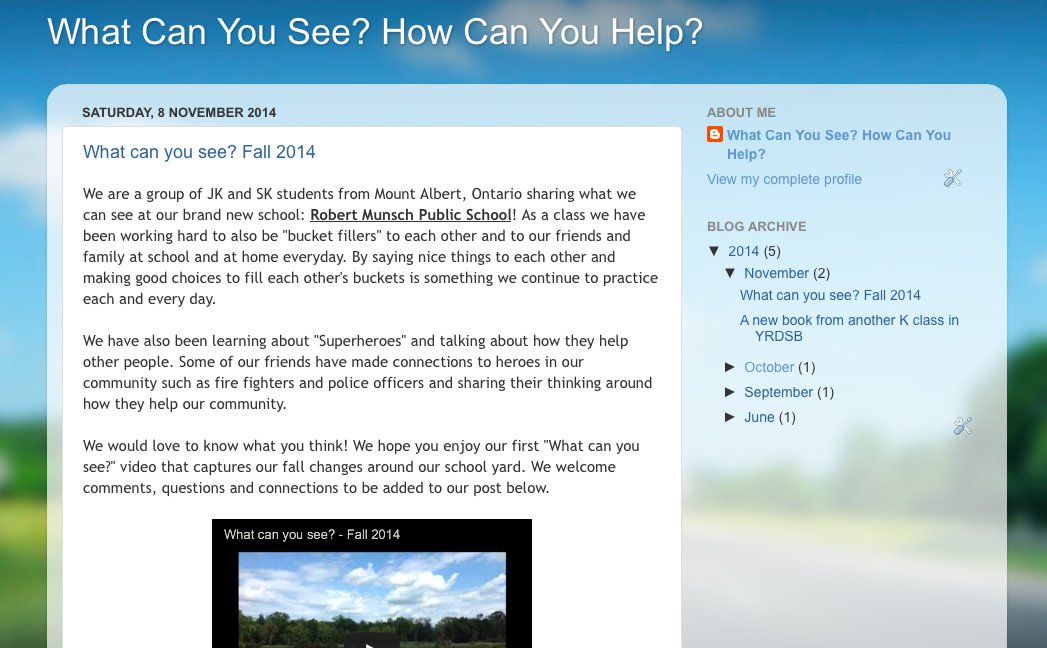This was most certainly an exciting announcement since our students have had very little exposure to what "Skype" is all about and seemed quite puzzled by the fact that they would actually be able to see, hear and talk to another class over the computer!
In preparation for our very first Skype call, we wanted our students to come up with three questions that they would like the students in Mrs. Harrison's and Miss Sanders' class to answer so that we could gain a deeper understanding of their school and where they live! Here is what we came up with:
1. Why are there so many "graders?"
2. What are the workers building near your school?
3. What are milkweeds?
Here is what we learned about their school, Lake Simcoe Public School:
1. We learned that graders are scrappers and their job is to go across the ground the scrape the dirt. It goes inside the truck and later goes out the truck.
2. We learned that the workers are building houses! Lots of houses! So far there will be 4 new roads and lots of new houses.
3. We learned that milkweeds were near their pond and monarch butterflies need milkweeds because they live on them. They are a type of plant and help with the life cycle of butterflies.
Here are the three questions Mrs. Harrison and Miss Sanders' class asked us about our school yard:
1. Why is your school called Robert Munsch Public School?
2. Why is your school look like ours?
3. Why do you have a park?
We had a lot of fun answering these questions and teaching our new kindergarten friends all about our school, where we live and what we can see! To conclude our Skype call, Mrs. Harrison and Miss Sanders' class came up with "compliments" for our class. Here are what some of her students had to say:
"I really liked your class."
"I want to compliment your class for talking to us."
"I would like to compliment your class for your book so we can read it."
Some other interesting facts we learned about our friends at Lake Simcoe Public School was that their school is 13 years old even though it looks a lot like our new school. We also learned that they have a new highway that goes to their school and more and more people will start living near their school in all those new houses.
As a way of consolidating our new learning about Lake Simcoe Public School and our first Skype call, we asked our students what they enjoyed about this experience! Here are some of their thoughts:
"I liked how we could see them on the screen and talk to them!" - C.L. (SK)
"I liked when I got to ask them a question." - A.O. (SK)
"I liked how they reached us about their school." - C.D. (JK)
"I like how they have a pond too!" - E.B. (SK)
This first experience and exposure to what Skype is all about not only gave our students the opportunity to connect with other students their age, but also allowed them to begin to gain an understanding of different communities and how they can be similar to our own. We truly look forward to connecting with Mrs. Harrison and Miss Sanders' class again over Skype very soon as we hope to compare our ponds and the changes that we observe!
Since this year's "What can you see?" project also extends to "How can you help?", this month, our class decided to get our school registered for the York Regional Police's "Holiday Heroes" Campaign and donate non-perishable food items to our local community for the holiday season! This is one way we are showing kindness and making a difference in our community!
 |
| Photo from: http://rmpsyr.com |
Please be sure to visit our "What can you see? How can you help?" collaborative blog to read more on this exciting project! #WCYseehelp










